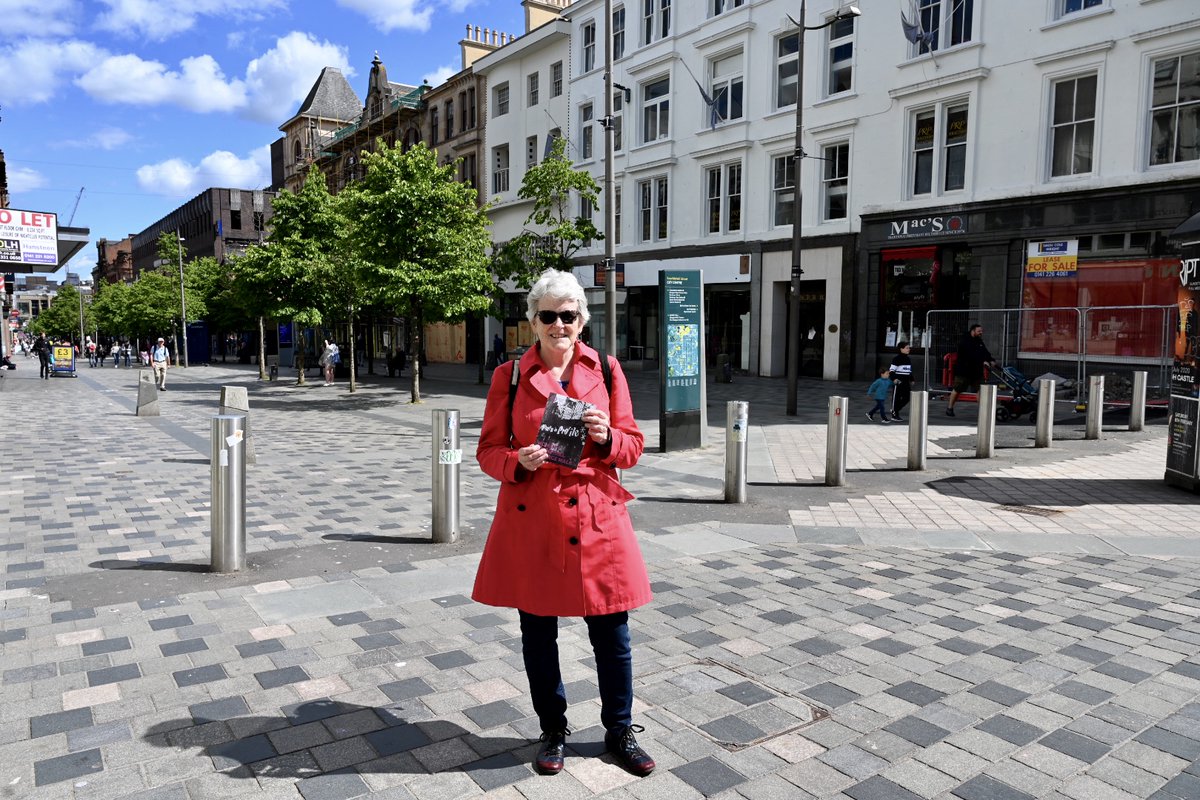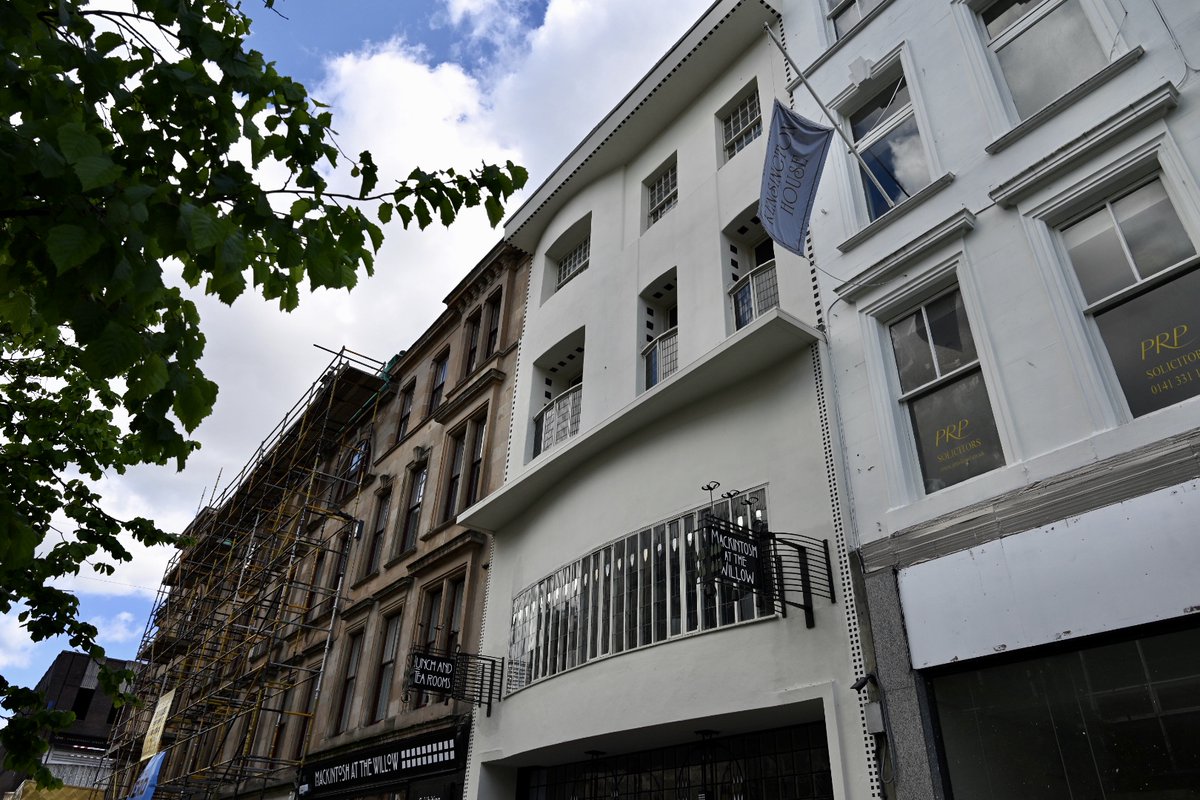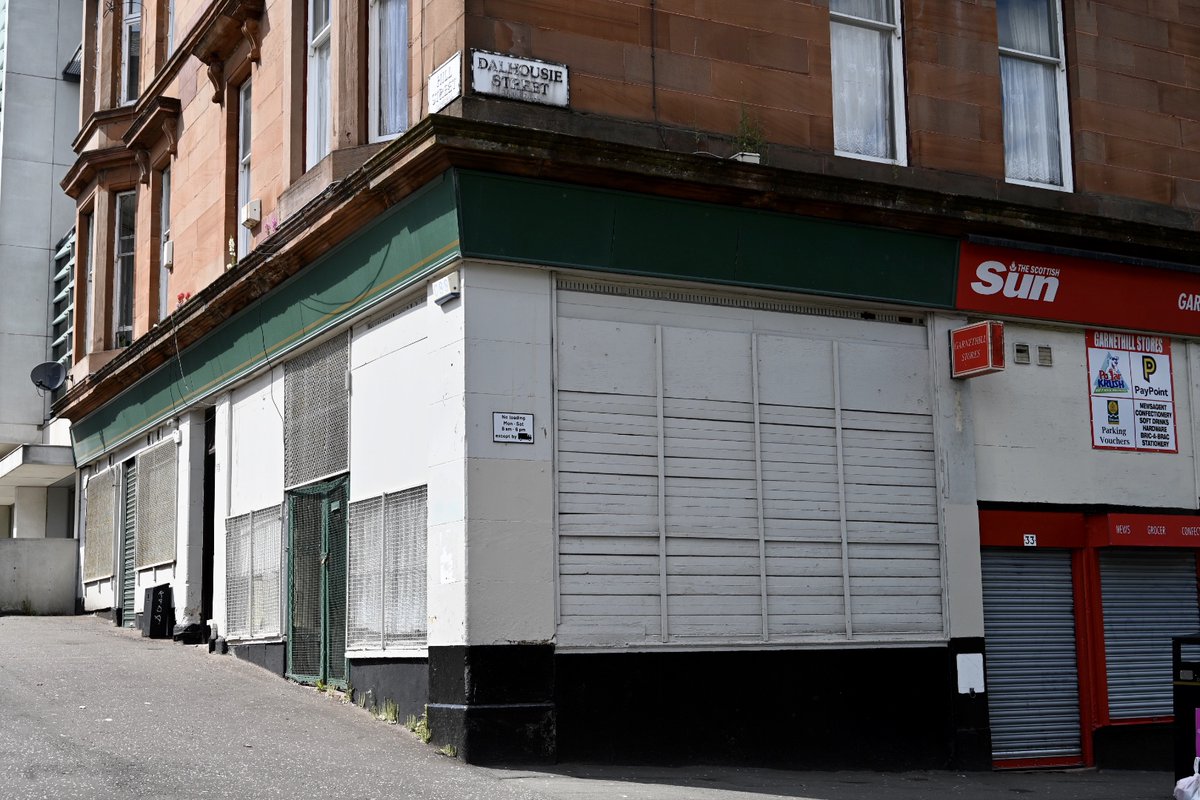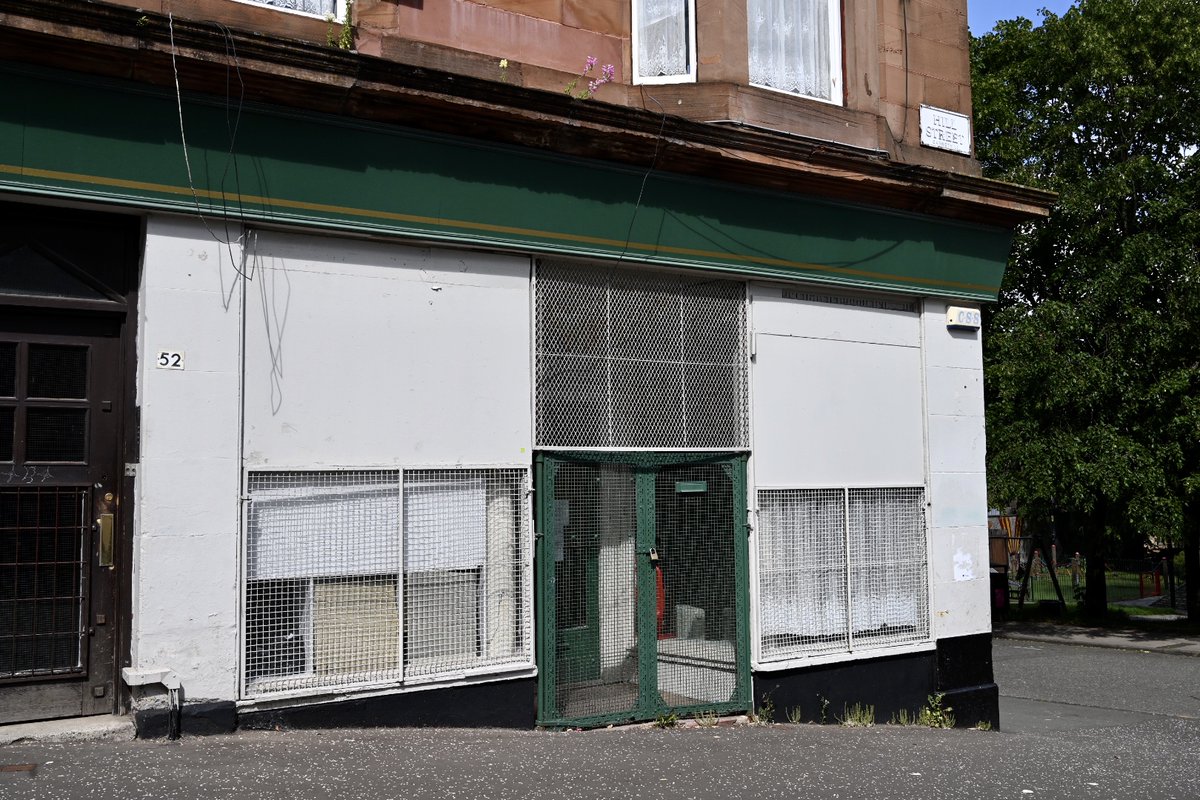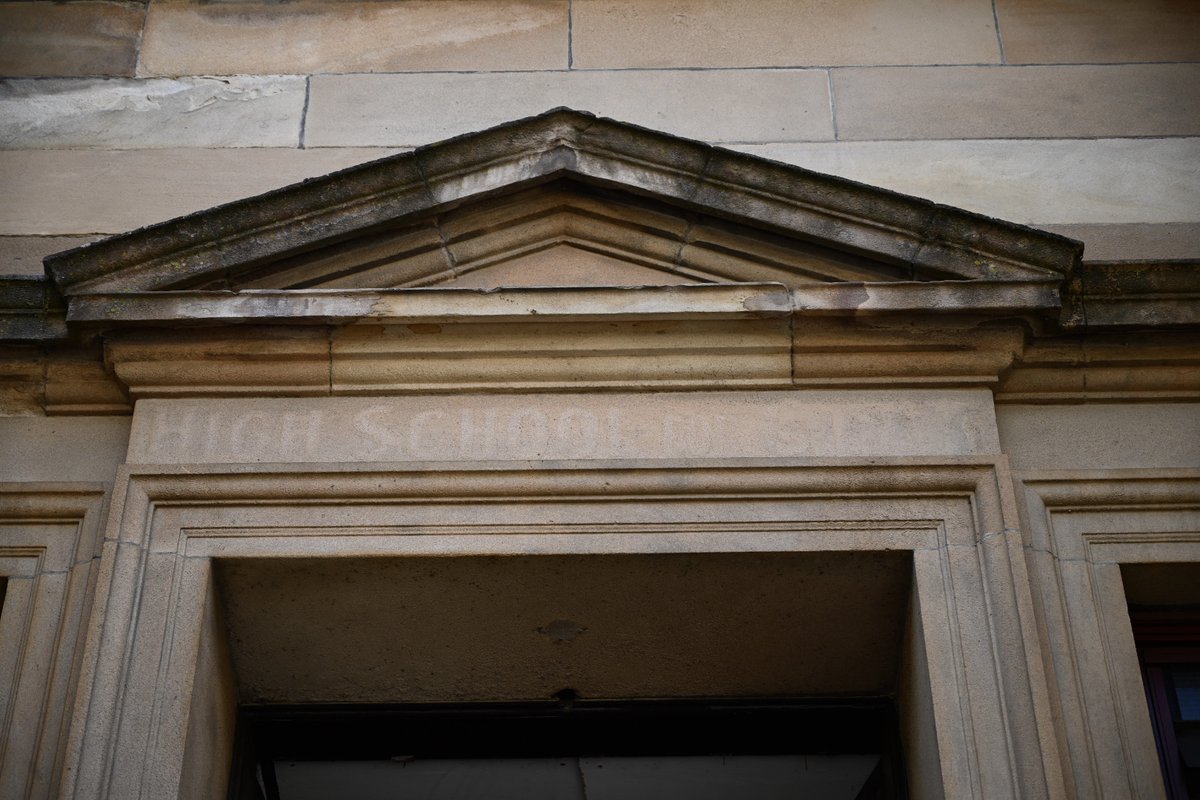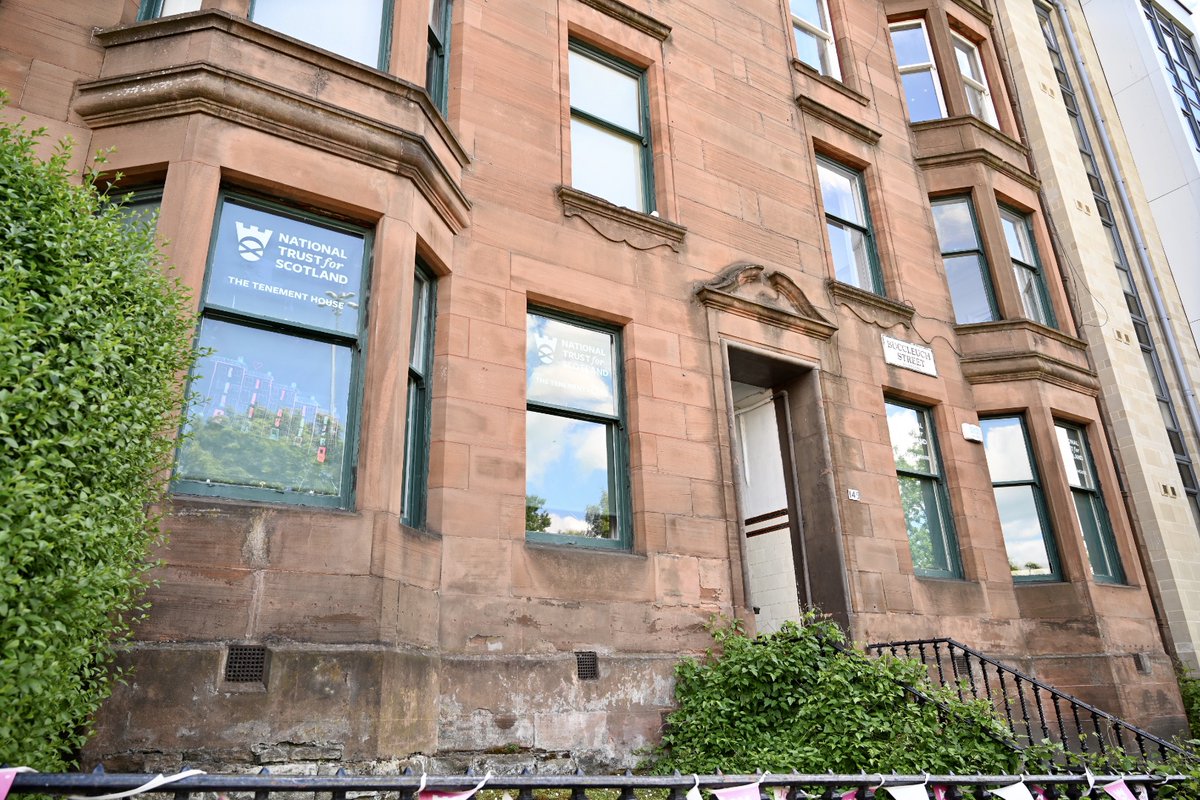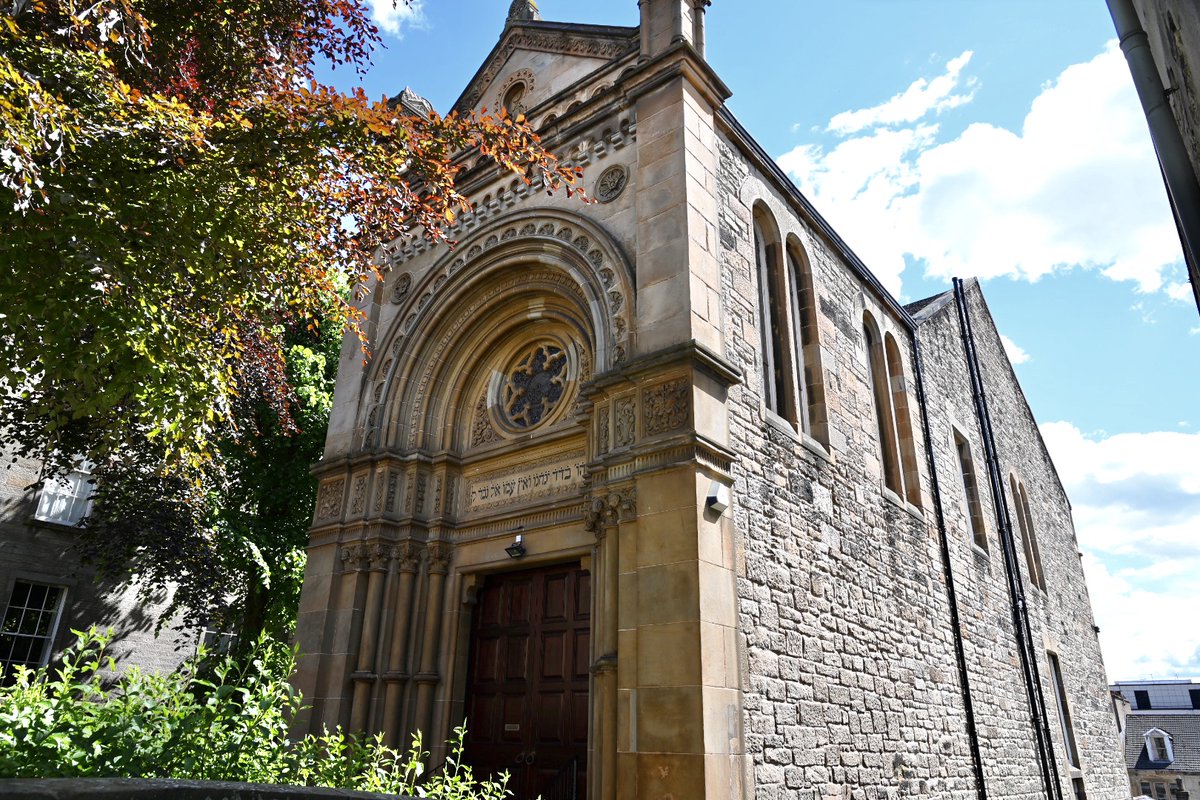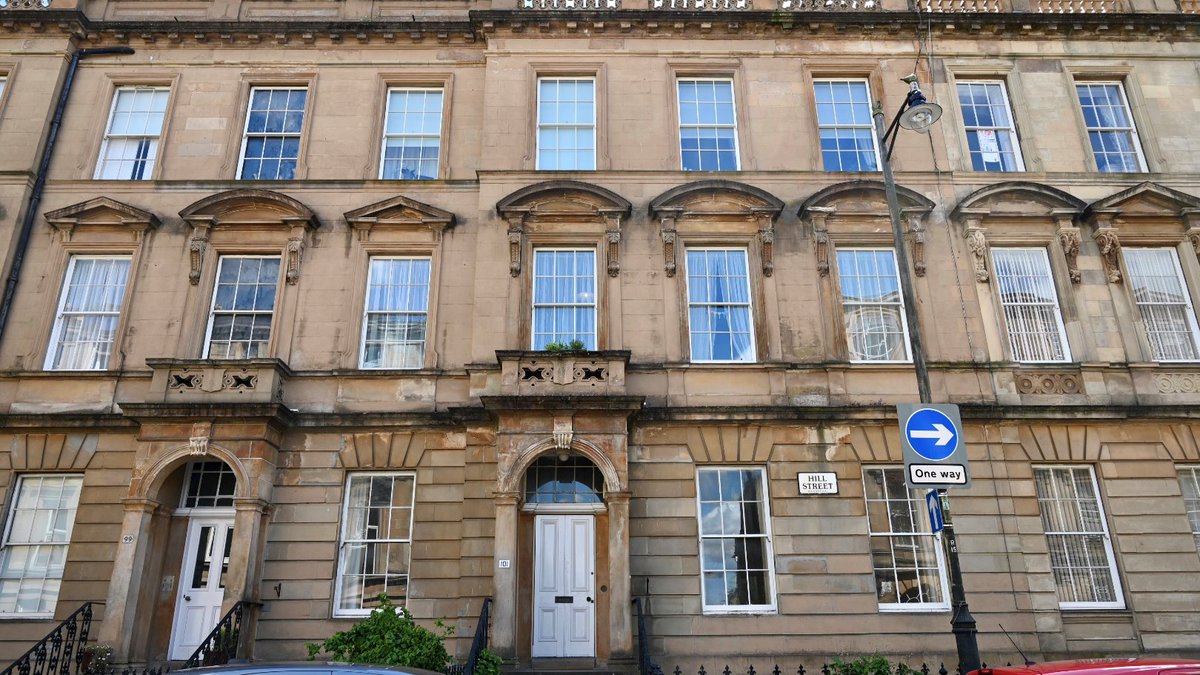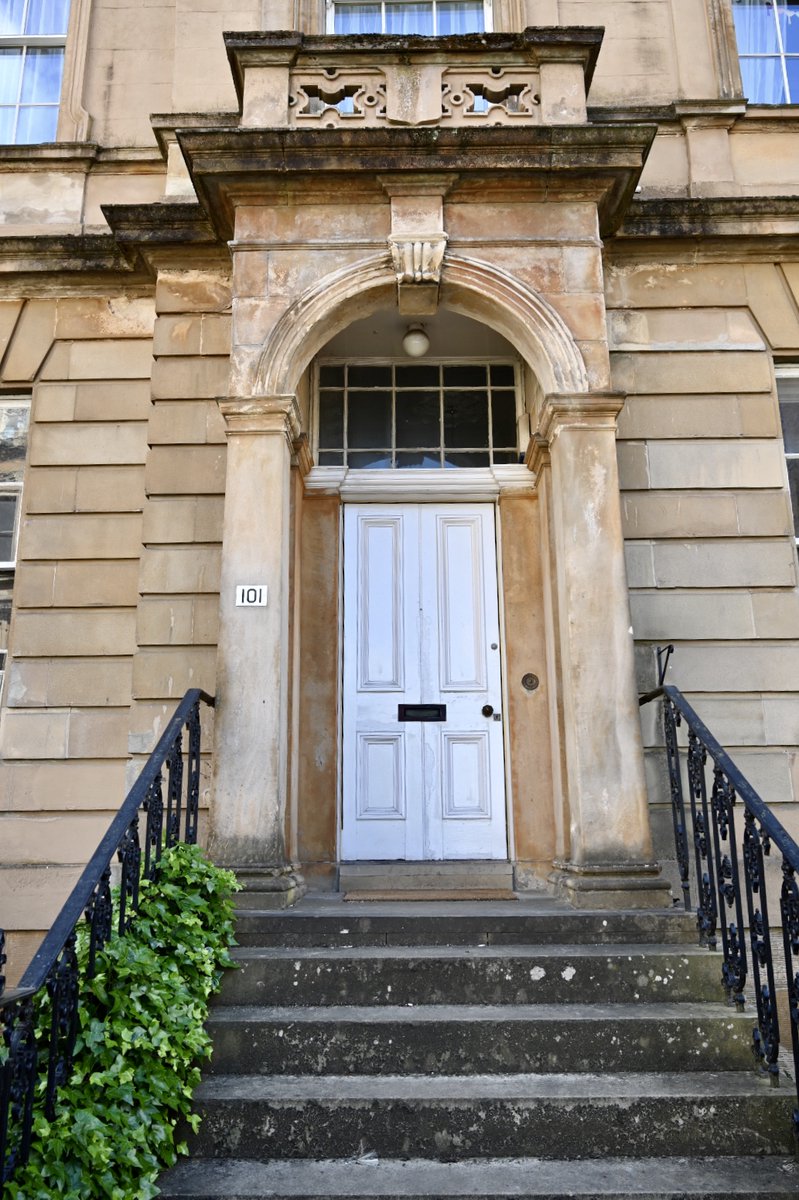Hi, I'm @AnabelMarsh, one of GWL's Women's History tour guides. We can't take you on any walks at the moment, so I've created a virtual Garnethill tour for you. We begin on Sauchiehall Street at the corner with Rose Street. Look at the white building behind my head. 1/19
The former Willow Tearooms, now known as Mackintosh at the Willow, were opened by Catherine Cranston in 1903. She commissioned Charles Rennie Mackintosh to create the building and his wife, Margaret Macdonald, was responsible for the interiors. 2/19
Now we make our way up Rose Street to Garnethill Park. There will be a lot of up and down on this walk - the clue is in the name! Just check the pictures. The other part of the name refers to resident Thomas Garnett (1766-1802), an early supporter of female education. 3/19
In the 1970s, Garnethill was in decline and artists including Margaret Watt, Carol Rhodes, Irene Keenan and Jane Sutherland began its regeneration. Some of their art, one mosaic and a gable end, is still visible in Garnethill Park. 4/19
Key to the regeneration was Betty Brown MBE: STV cleaner, union rep and chair of Garnethill Community Council. Slabs in the park by Ulrike Enslein bear quotes from residents, one of which pays tribute to Betty who died in 2006. She was Scotswoman of the Year in 1995. 5/19
Across the road from the park is Dalhousie Lane, home to Women in Profile, a grassroots project formed to promote the work of women artists in 1990 when Glasgow was European City of Culture. Why does this shabby building feature on the cover of our Garnethill walk leaflet? 6/19
Women in Profile was the foremother of @womenslibrary which began round the corner behind this unassuming shop front on Hill Street in 1991. Many years and several moves later, the library ended up in its permanent award-winning premises in Bridgeton. 7/19
Before moving on, check out Garnethill's lamp-posts! The small, plump birds perched on top are sculptor Shona Kinloch's Chookie Burdies. About 150 were installed in the surrounding streets in 1993. 8/19
Moving on to Scott Street - in 1882 Glasgow's first Hospital for Sick Children opened in this sandstone villa with a roundel above the door of Charity comforting a child. It survived on charitable donations and the authorities prided themselves on employing only "ladies"! 9/19
Two former schools, both now housing, sit in Buccleuch Street: Garnethill School and Glasgow High School for Girls. Former students of the latter include writer and broadcaster Muriel Grey and Lady Hazel Cosgrove, appointed first woman judge of the Court of Session in 1996. 10/19
Further along Buccleuch Street is National Trust for Scotland's @TenementHouse11 (currently closed). Shorthand typist Agnes Toward lived here 1911-1965. She rarely threw anything away, creating a time capsule showing what it meant to be an ‘independent woman’ at the time. 11/19
Back uphill to Garnethill Synagogue, opened 1879. The Scottish Jewish Archives Centre, @TheSJAC, based here, has collections on two remarkable artists: Hannah Frank (1908-2008), daughter of Russian Jewish emigres, and Hilda Goldwag (1912-2008), a refugee from the holocaust. 12/19
The apartment building opposite the synagogue, which dates to 1906-12, was once the Glasgow Cancer Hospital. Director George Beatson, whose name is still associated with cancer treatment in Scotland, was one of the pioneers in the treatment of breast cancer. 13/19
101 Hill Street is the birthplace of author and journalist Catherine Carswell (1879-1946). Her biography of Burns enraged traditionalists and she even received a bullet in the post! @womenslibrary's annual writing festival, Open the Door, is named after one of her novels. 14/19
Here we have the sad sight of Glasgow School of Art after two major fires in 2014 and 2018. On the left is the iconic Mackintosh Building, and on the right is the Reid Building. It was named after Dame Seona Reid, Director of the School from 1999 to 2013. 15/19
Here are both buildings before the 2014 fire. The School's Glasgow Boys, Mackintosh et al, are justly celebrated, but let’s not forget the Glasgow Girls such as Jessie M King, Bessie MacNicol, Ann Macbeth, Jessie Newbery, and Margaret and Francis Macdonald. 16/19
We go back down to Sauchiehall Street for our final stop. On the site of this former restaurant, no 302, was the Women's Freedom League's Suffrage Centre with a book shop and tearoom decorated in their colours of green, white and gold. No trace of it remains today 17/19
So walks like this are important: to keep women's history alive when much of the physical evidence has disappeared. To find out more, head to our #WomenMakeHistory page where you can download maps for our walks, trails, and bike ride. 18/19 https://womenslibrary.org.uk/discover-our-projects/women-make-history/
Finally, how about you? Tell us about the women you come across on your walks: place names, street art, memorials etc. Tag @womenslibrary and #WomenMakeHistory. My fellow guide Joy has written a blog post with some ideas. Bye for now! 19/19 https://womenslibrary.org.uk/2020/06/09/turn-your-walk-into-a-herstory-treasure-hunt/

 Read on Twitter
Read on Twitter